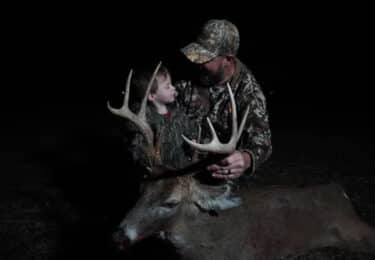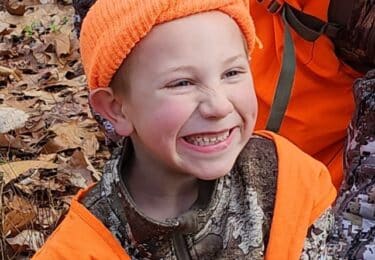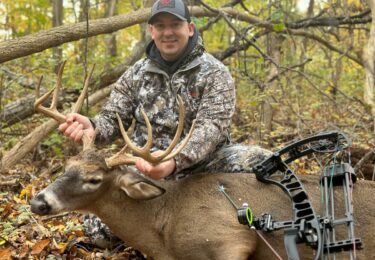Hunter – My First Bird Dog
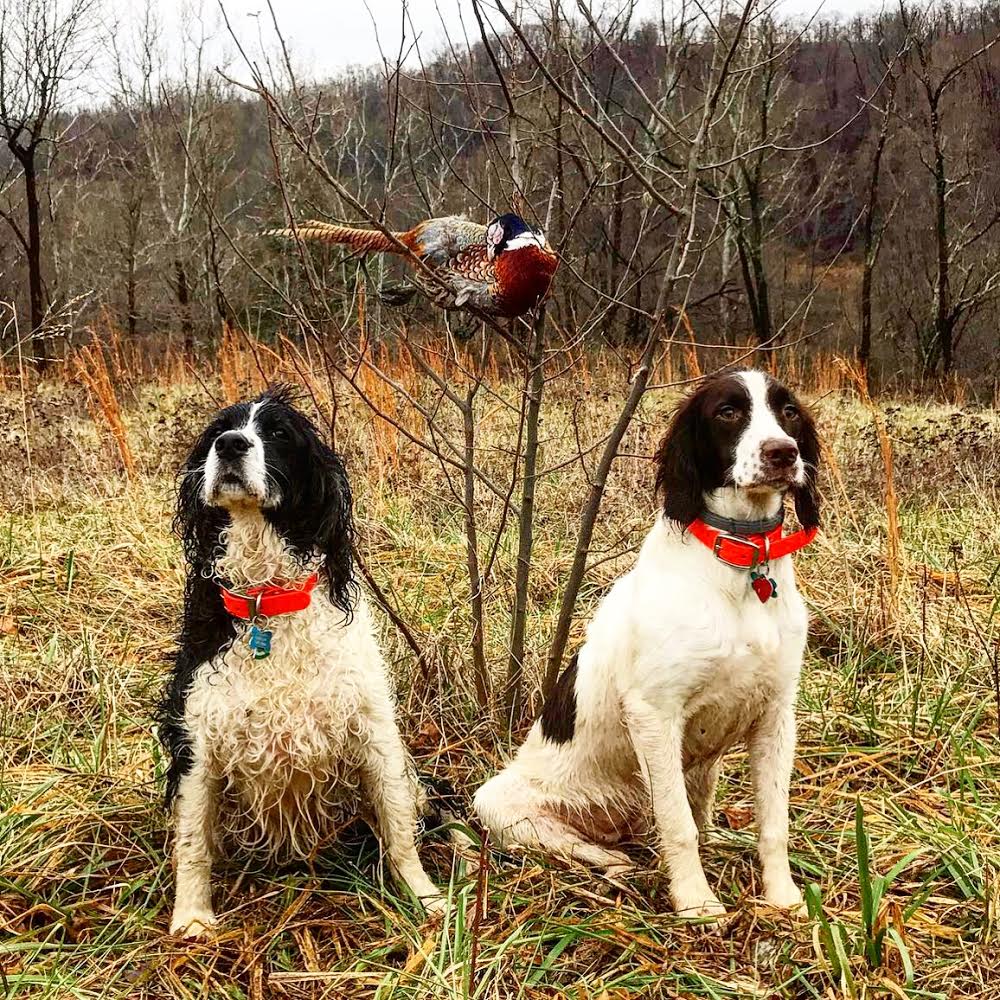
Growing up, my parents never had a dog, let alone a hunting dog. My only knowledge of hunting dogs were the plentiful stories my grandfather would tell me about his Springer Spaniels eagerly plowing through the thick brush on the trail of ruffed grouse, pheasants, and rabbits. His stories always fascinated me and frustrated me at the same time. My parents would not allow me the opportunity to experience the highs that come with bringing up, training, and working my own dog. I dreamed of having my own Springer, the original bird dog that came to the U.S. from England.
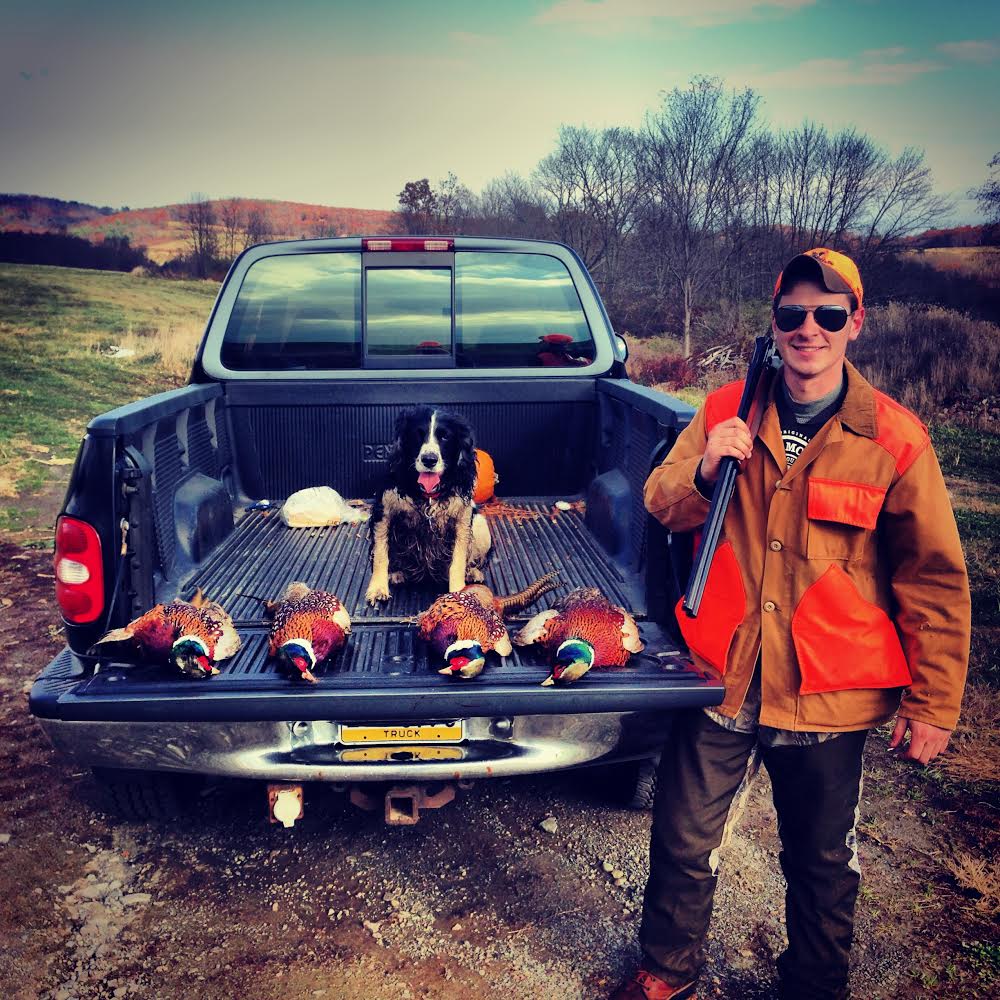
Well, my dreams came true now more than 12 years ago at the age of 15. My parents finally caved to many years of begging and set me up to pick my first bird dog, an English Springer Spaniel. As I waited anxiously for the litter of pups I was to choose from turn 8 weeks old, I read every piece of literature I could on how to pick a bird dog. Every book that I opened and every article I read on the internet all said the same thing. In essence there was always a theme about the dominant, best looking, strongest, and most social pup being the “pick of the litter” when considering a hunting dog. Naturally, you always need to pay extra to get the first pick. There might be many good pups but there can only be one pick of the litter.
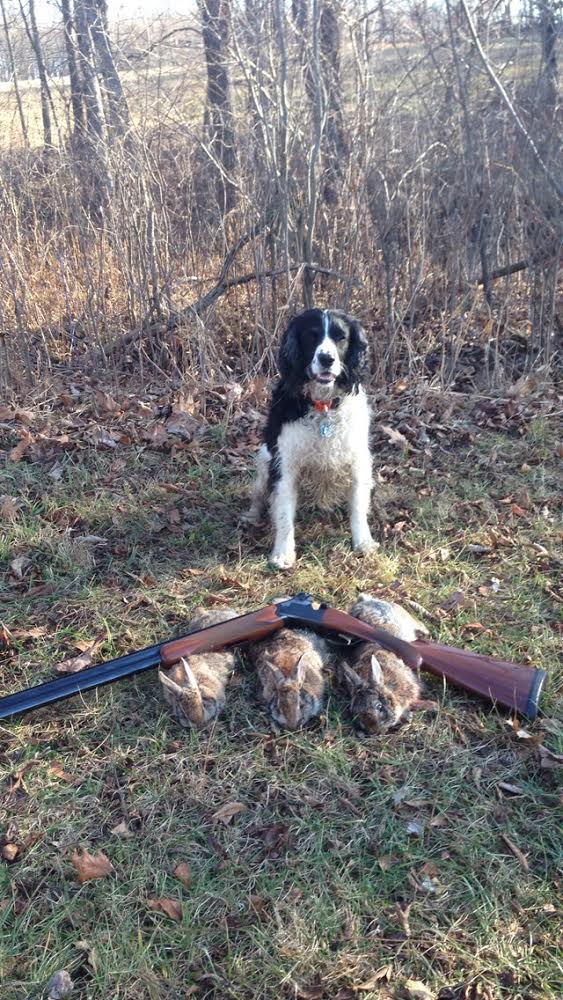
Young Hunter with some rabbits we found on public land in Pennsylvania
As a 15-year-old kid, what did I know? Of course, you want all those features in your hunting dog, and lucky for me, I did have the first pick of the litter!
On the night of January 6th, I could not sleep. The anticipation kept me up tossing, turning, and thinking about the pup I was about to take home. The next morning, we loaded into the truck with; all of my dog training books stacked in my lap highlighted and tabbed in case I needed them while I was there. I made my dad stop at Cabelas on the way so I could pick up some pheasant feathers to perform one of the “tests” I read about in the literature.
We finally get to the breeder and after a short conversation with her about everything I planned on doing, she quickly shut me down calling it all nonsense. She told me that the best thing I could do if I really wanted a top-quality hunting dog was to go in there and pick the one that liked ME the most.
What!? I thought I was supposed to pick the one that I liked the most. You know, the best looking, dominant, and most energetic one. She simply responded with, do what you’d like, but wouldn’t you rather have a companion that wants you over one that you forced to be with you?
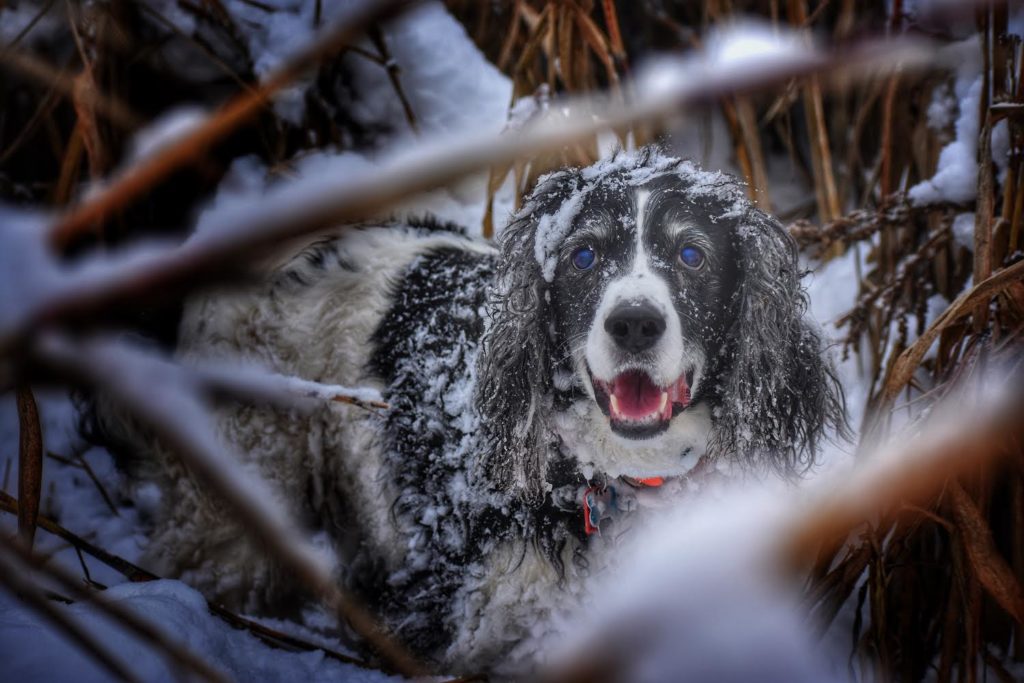
I was thrown in a loop. Everything I studied said quite the opposite I was just told from a breeder with multiple field trial winning dogs. I walked into the room to a swarm of puppies jumping all over me, yipping, excited, and wanting attention. I walked around trying to look at each of them for signs of impairments that would signal a poor bird dog. The excitement lasted all but 2 minutes until most of them seemed to become disinterested in me, except for one. This little, tiny pup kept following me around as if I were it’s father.
I ignored her at first as I picked up some of the other pups to get a better look at. I sat down to look at another puppy, and she plopped herself right on my lap and fell asleep. At that point I looked down at her, and all my “bird dog tests” that I was supposed to perform to pick the best one went right to hell. She was the one. The best one as a matter of fact. Why? Because a bond was formed right then and there that could never be achieved by any of the other disinterested pups, no matter how much they liked pheasant feathers.
A bit romanticized it seems I know, but one thing EVERY hunting dog owner needs to learn in order to have a superior bird dog, is that there is truly a deeper connection to be achieved other than feeding them, letting them out, and taking them on an occasional hunting trip.
Twelve years later and Hunter is still doing what she loves best; hunting upland birds. She has lived in 4 different states and has seen more of this country than most humans. There is no telling the amount of birds she has brought back to me; let alone the ones she has flushed. Her age may show in her now gray hairs, but it does not in the field. She is determined, methodical, and thorough. I never taught her how to hunt, nor did I need to. She was a star from the beginning and still is to this day. Her will to please me above anyone and anything else astonishes those around her. I can only thank her for making me see that the dog chooses you, not the other way around.
Bandit – The Reject Turned into a Superstar
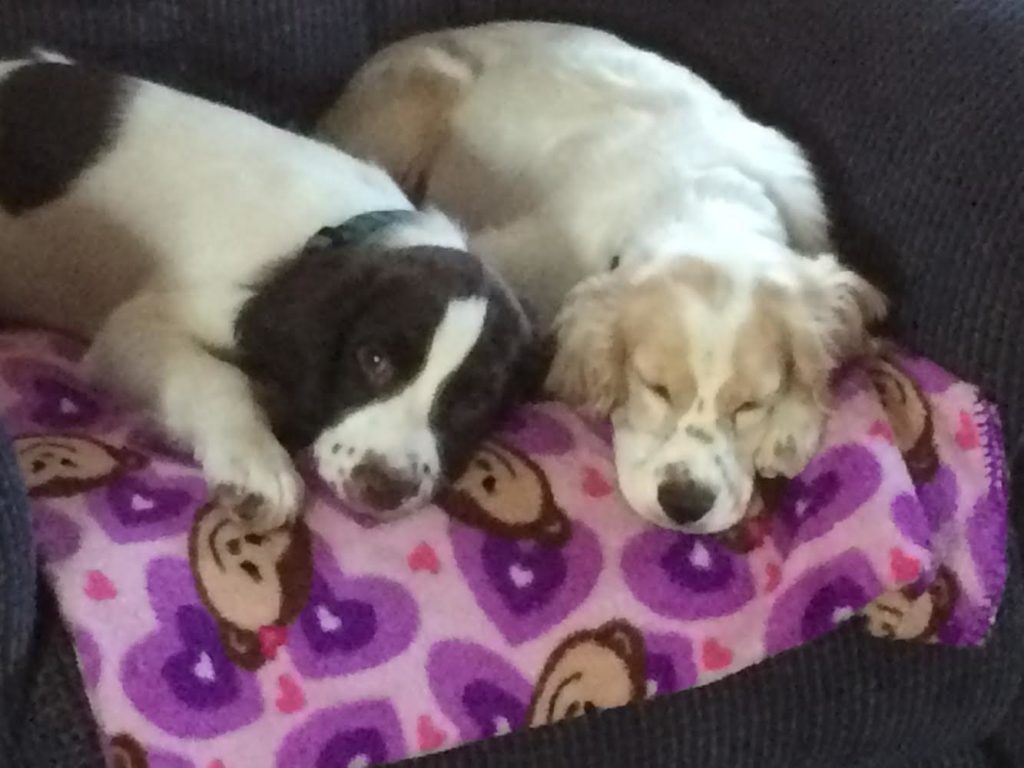
Bandit (left) the “reject” puppy with my mom’s cocker spaniel Abby (right)
Several years later after many pheasants, grouse, quail, chukar, woodcock, and rabbits succumbed to Hunter’s nose and my gun throughout the country, we found ourselves in the hills of West Virginia. Hunter was 8 years-old and I was looking to get myself a new puppy while she still had the energy to help me teach the young one the many things we have learned throughout our experiences. My dad had told me about a springer spaniel breeder that had just one pup left. My first thoughts took me back to the literature I read so long ago. The picture on the website showed a plump shy little puppy too afraid to look into the camera. She was mostly white with very little liver (brown) color, which most people prefer the opposite when it comes to looks. Her tail was docked as if she were of show lines (2/3) instead of field lines (1/3); something the “field-trialers” would scoff at. She was fat, really fat, and to top it off she was the most shy and timid of the bunch. The exact opposite characteristics said to be instilled in a high quality bird dog.
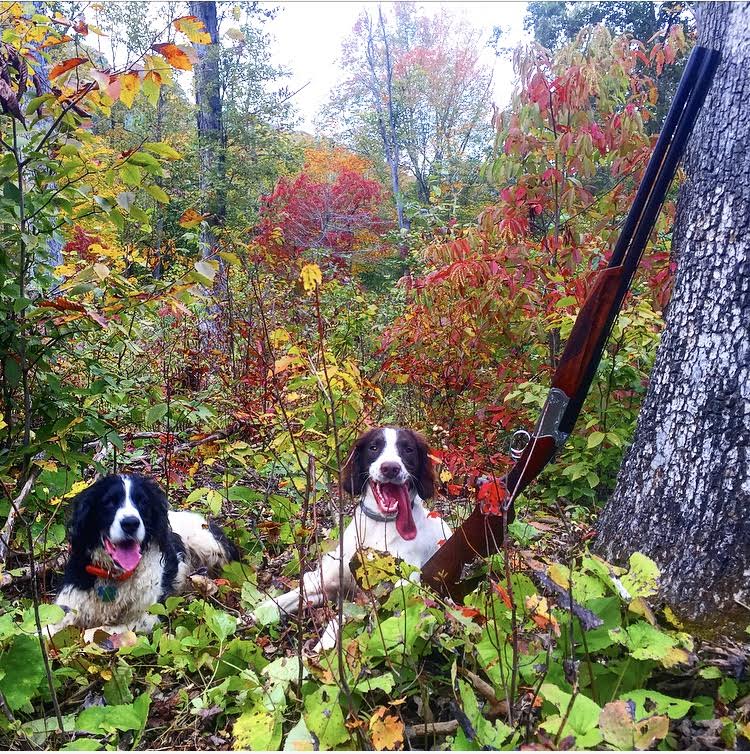
Hunter & Bandit in the hills of West Virginia searching for grouse
This pup was a reject the breeder told us as she even offered to take less money for her. She will likely make a great house pet but probably not a great bird dog. My father decided to purchase her as he was indeed looking for just a house pet (believe it or not) and not a wired bird dog like Hunter. About two months later, however, my father decided that having two dogs in the house was a bit much for him and my mom who got a cocker spaniel after Hunter and I left the house. He asked me to take the Bandit as I still wasn’t able to find a pup for myself. I brought her in at 4 months old, and my perspective on picking great hunting dogs changed forever.
I am not saying the big shots in the bird dog industry are wrong about wanting a dominant figure or a jacked stud dog like we see in pictures all the time as their choice of partner in the fields, I am just saying there are two schools of thought (in which I am about to explain) and after my experience with Bandit, I prefer the latter. The dominant dog is thought of to be the leader of the pack. The one where there is no challenge it will not accept. In a tough situation or harsh territory, you want that dog by your side as you know it will not fail. However, this dominance comes with challenges. After all, YOU are the master, commander, leader, etc., not the dog. As the leader and in order to successfully train your dog, you must break the dog down to show it you are the one in charge. This can be difficult, especially for a first-time dog owner. It is done successfully all the time, but there is also a chance that the dog does not take to it easily. Breaking a dog down to fit you takes a lot of work and effort, but can pay off in the end.
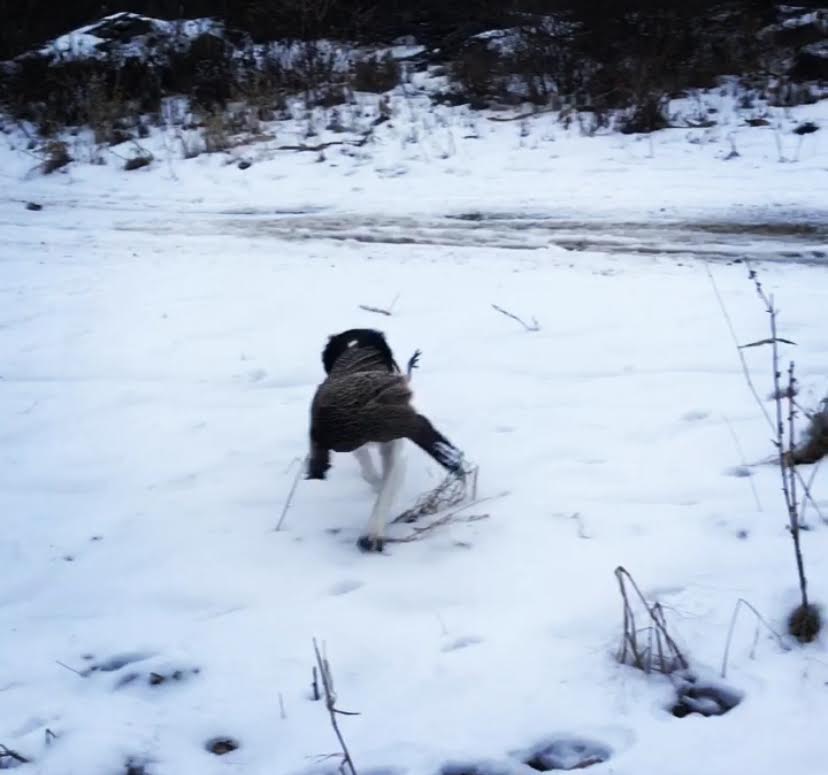
Bandit, on the other hand, was the absolute opposite. By the time I received her she had lost a good bit of the puppy weight as she was put on a small diet while also constantly running around outside with my dad. Upland season had just started in West Virginia, so I was eager to get her out a little bit just to see what I was working with. I bought a few birds off of a local preserve and let them loose on the property I was living on at the time. Bandit, about as big as the birds herself started out into the field walking very slowly, backing away at anything that looked weird to her. I would swoop her up and gently take her over to show her there was nothing to be afraid of. After about an hour, she had gained some confidence and started to explore. Suddenly, a screaming cackle filled the air with wings flapping wild. I picked up my 20 gauge and blasted the bird to the ground. I looked around and Bandit was nowhere to be found. I thought, “oh no, I’ve ruined it.” Too much at one time…
Between the giant pheasant bursting into the air paired with the loud bang of my shotgun, she had runoff. But then, here she comes out of the brush, bird in mouth covering her whole body from my view. She drops the pheasant at my feet and turns right around to go find another, the beginning of a legacy.
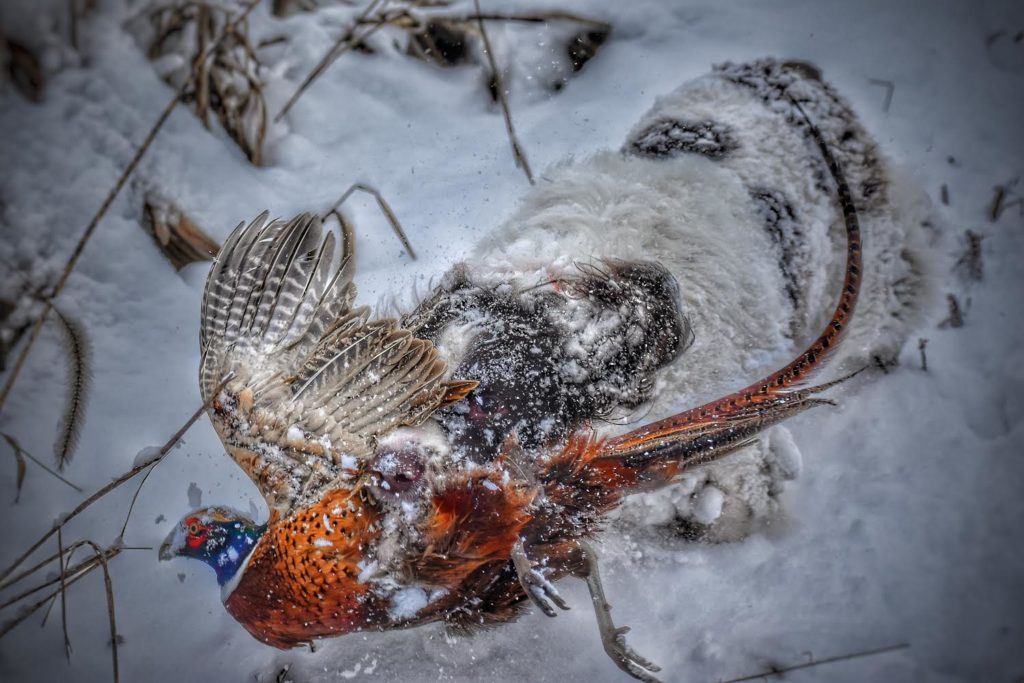
There were many other times along the way where Bandit’s shy and timid personality had to be worked with, but after that first day I knew I would be able to build her up into something great, and it wasn’t that hard.
Today, she is just as confident (if not more) than any stud dog or “pick of the litter” you will see out in the field. She now not only outperforms both her parents and every single one of her littermates, but every other dog we have ever been around. Her obedience, style, personality, and exceptional abilities impress everyone she is in the presence of. At the end of the day, a bit of jealousy sometimes ensues in the other dog owners we hunt with; a reject turned into a pure superstar. Bring a dog down and they may despise you for it but build a dog up and they will be forever loyal; two ways to achieve the same outcome, a superior bird dog. I’ll take the reject every time.
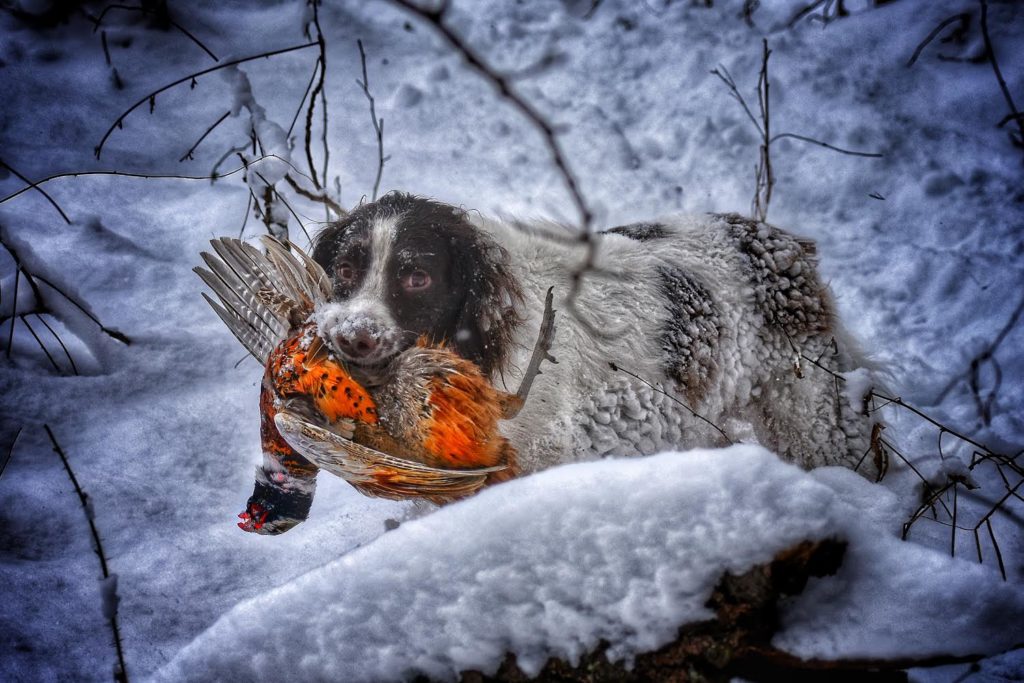
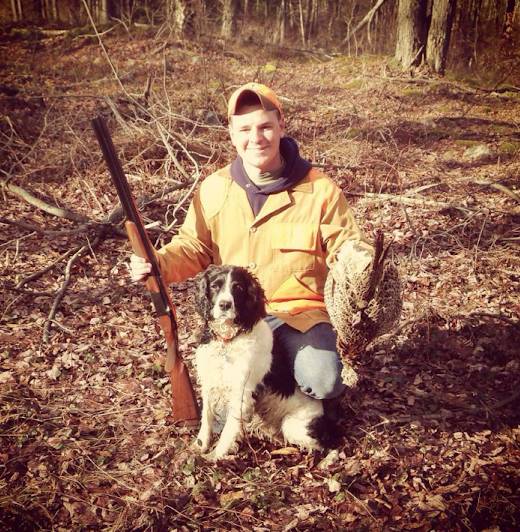
Follow Brian on Instagram @bhalchak
